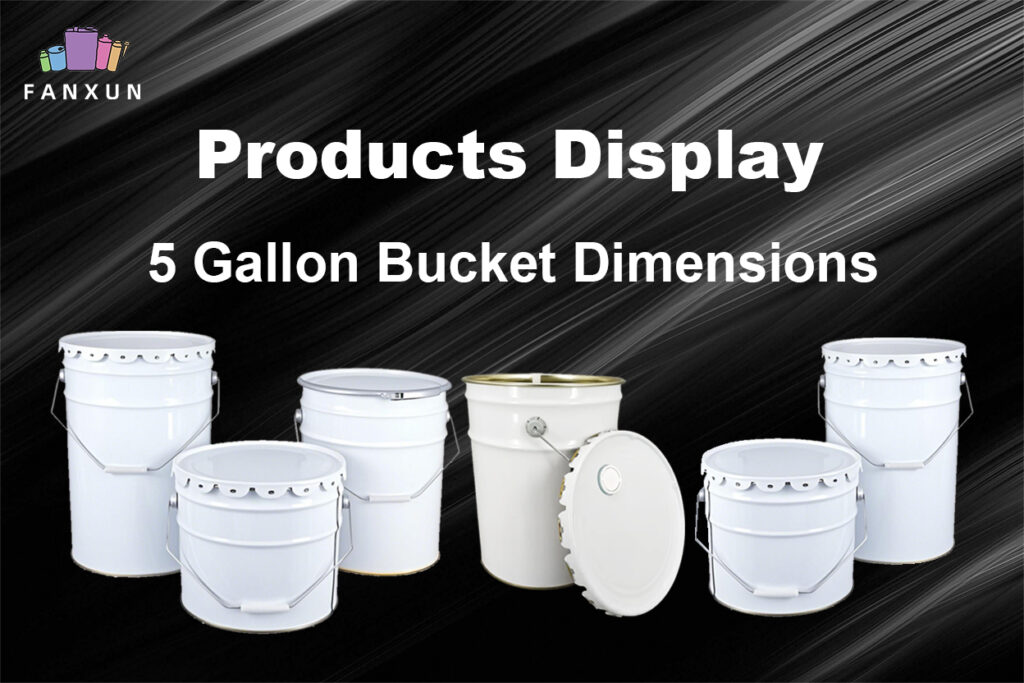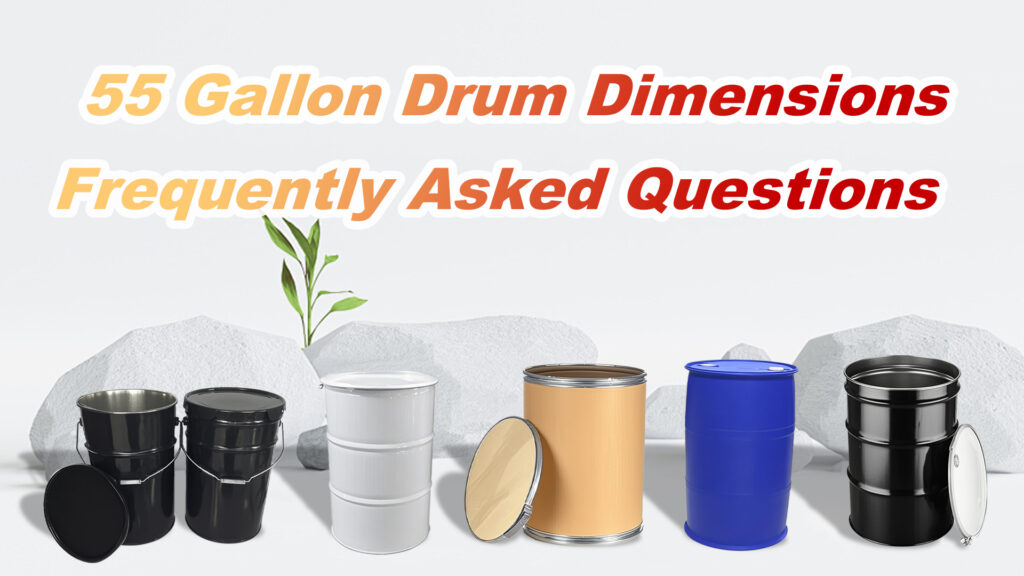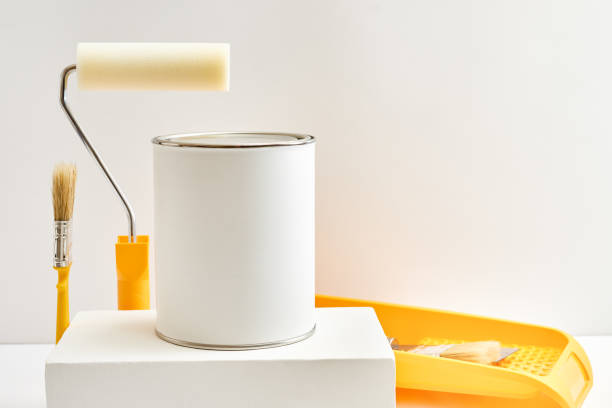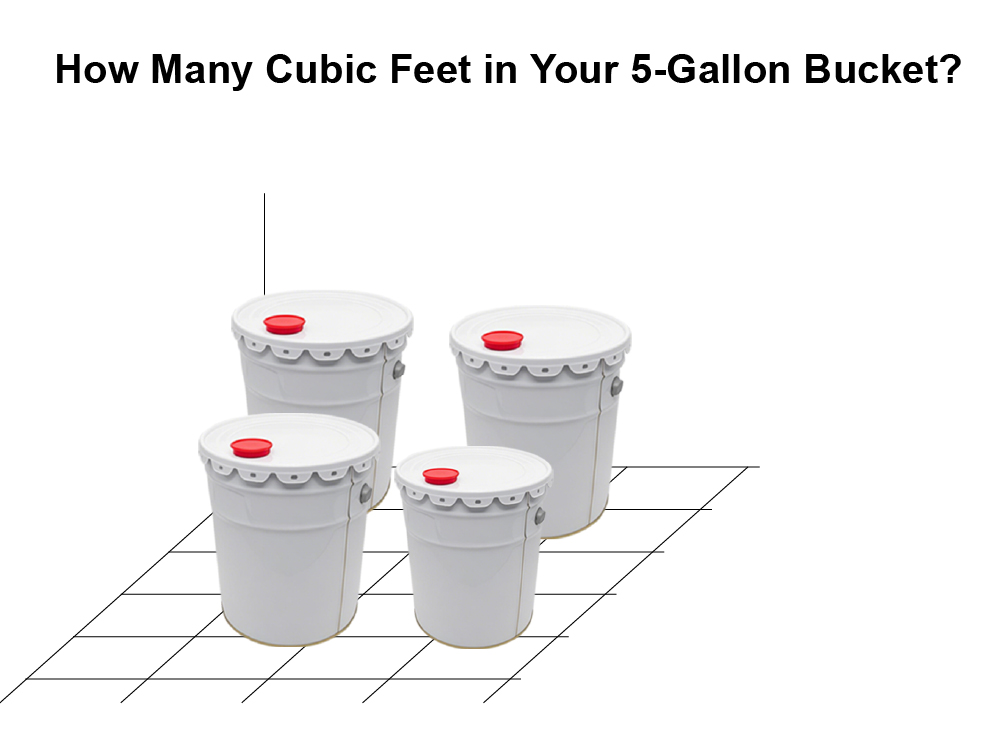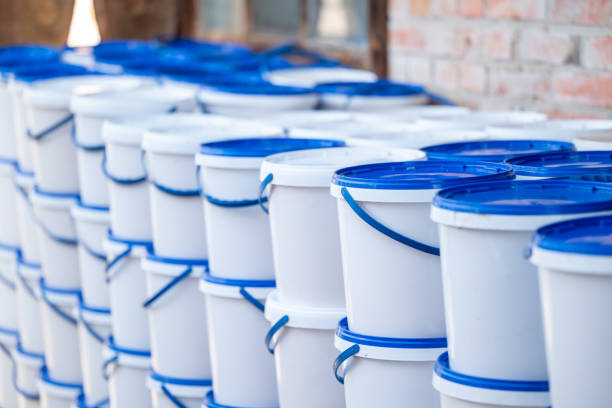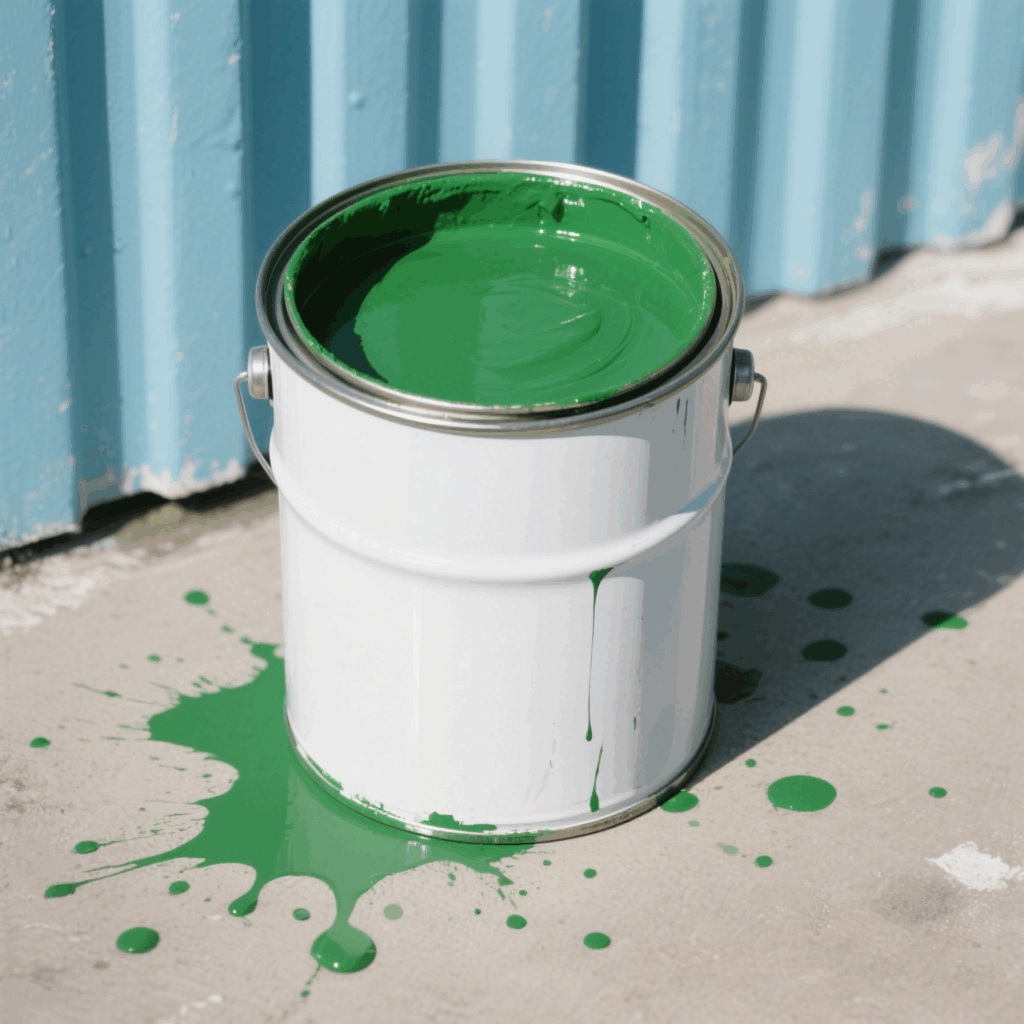The selection of an appropriate container is a cornerstone of operational efficiency and safety in numerous industrial settings. The right container not only protects its contents but also ensures compliance with handling and transportation regulations. Among the myriad of options, the 5-gallon pail stands out as a versatile and widely adopted standard. However, within this category, choices abound, primarily between robust steel pails and adaptable plastic pails. This comprehensive guide delves into the nuanced dimensional differences, material properties, and critical considerations to empower you in selecting the ideal 5-gallon pail for your specific industrial applications.
5 Gallon Steel Bucket Dimensions
- Height: 5 Gallon Steel bucket generally range in height from approximately 13 to 17 inches (33 to 43 cm). Specific examples can be around 13.4 inches, 13.5 inches, or 13.4375 inches.
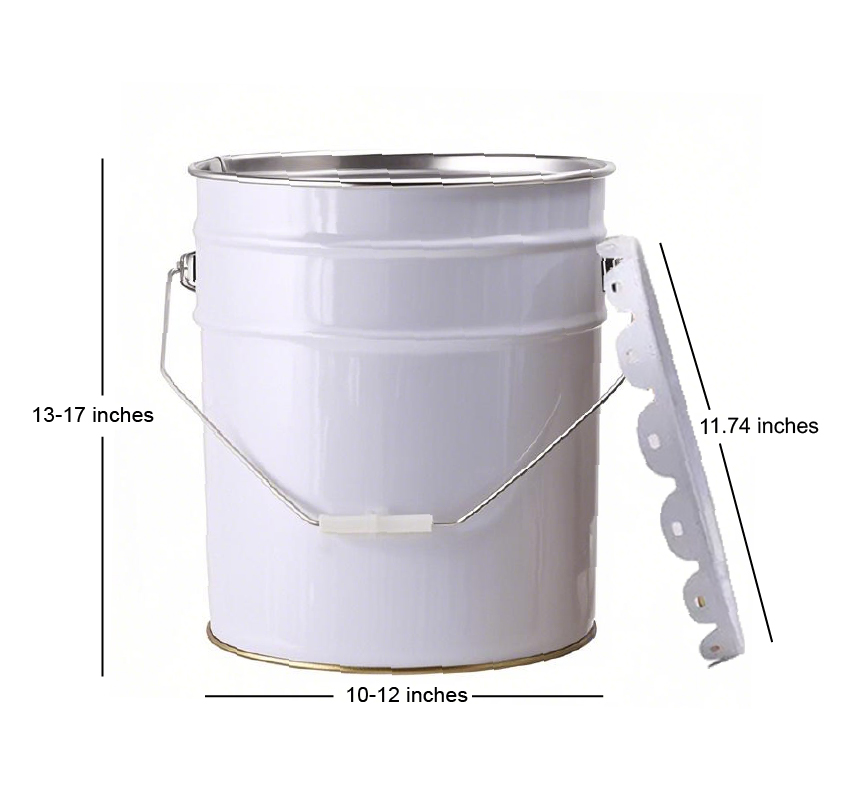
- Weight: Empty 5 Gallon steel bucket are significantly heavier than their plastic counterparts. They typically weigh between 3 to 10 pounds (1.4 to 4.5 kg). Some examples include weights around 2.41 lbs, 2.9 lbs, 3 lbs, 4.835 lbs, and 5.32 lbs. The weight can vary based on the steel gauge and whether a lid is included.
- Diameter: The diameter of a 5-gallon steel bucket usually falls between 10 and 12 inches (25 to 30 cm). Common outer diameters are often noted as approximately 11.25 inches to 11.81 inches. Specific top diameters can be around 11 1/4 inches, 11.74 inches, or 11 13/16 inches, with bottom diameters sometimes being slightly smaller for stackability.
- Wall Thickness: The wall thickness of 5 gallon steel bucket is often described by its gauge, with common gauges being 24, 26, 28, or 29. In inches, this typically translates to a range of approximately 0.024 to 0.032 inches (0.6 to 0.8 mm). For instance, a 29-gauge steel pail might have a minimum wall thickness specified.
5 Gallon Plastic Bucket Dimensions
- Dimensions (Height): Plastic 5-gallon bucket generally have heights ranging from 13 to 15 inches (33 to 38 cm). Specific examples often cite heights like 14.5 inches, 14 5/8 inches, 14 11/16 inches, or even up to 15 inches.
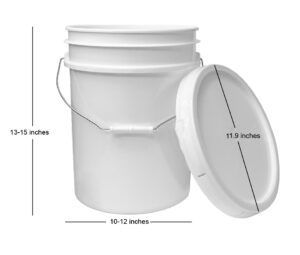
- Weight: Empty plastic bucket are considerably lighter, typically weighing between 1.8 to 3 pounds (0.8 to 1.4 kg). Common reported weights are around 2 lbs or 2.19 lbs.
- Diameter: The diameter of a plastic bucket is usually between 11 and 12 inches (28 to 30 cm). Typical top outer diameters are around 11.9 inches to 12 inches (e.g., 11 13/16 inches, 11.91 inches, 11.95 inches), with the bottom diameter often slightly less to allow for nesting.
- Wall Thickness: Plastic pails commonly have a wall thickness ranging from approximately 0.070 to 0.100 inches (1.78 to 2.54 mm). This is often expressed in “mils,” where 1 mil equals 0.001 inches (e.g., 70 mil, 90 mil, or 100 mil). For example, a 90 mil thickness is equivalent to 0.090 inches.
What is an open head bucket?
Definition: This is a pail with a capacity of 5 US gallons (approx. 18.9 liters) where the entire top lid is removable.
Key Feature: The “open head” design allows full, unobstructed access to the interior of the bucket.
Lid Types: Lids are separate pieces, often snap-on or secured with a lever-lock/bolt ring closure, sometimes using a gasket for a tighter seal.
Common Uses: Ideal for solids, powders, semi-solids (pastes, grease), viscous liquids (paints, adhesives), and items that require easy filling, scooping, mixing, or emptying. Also used for general storage and transport.
What is a closed head pail?
Definition: This is a pail where the top is an integral, non-removable part of the container structure.
Key Feature: Instead of a removable lid, it has one or more small, sealed openings on the top, typically fitted with screw caps or bungs (plugs).
Access: Contents are filled and dispensed through these smaller openings.
Common Uses: Primarily designed for storing and transporting liquids (like chemicals, oils, solvents, beverages, cleaning solutions) where dispensing can be done by pouring or pumping through the small openings. The design provides excellent sealing, reduces evaporation, minimizes spill risk, and offers better containment security.
Materials: Commonly made of plastic (HDPE) or steel.
How much does a 5 gallon bucket of water weigh?
-
Weight of the Water:
- The density of water is approximately 8.34 pounds per US gallon (or about 1 kilogram per liter) at room temperature.
- Therefore, 5 US gallons of water weigh: 5 gallons * 8.34 lbs/gallon = 41.7 pounds (approximately 18.9 kilograms).
- Note: Water density varies slightly with temperature. This figure is a standard approximation. If you were using Imperial gallons (less common for this type of bucket, mainly used in the UK), water weighs about 10 pounds per Imperial gallon, so 5 Imperial gallons would be 50 lbs. We’ll assume US gallons here.
-
Weight of the Bucket:
- A standard plastic 5-gallon bucket itself typically weighs around 2 pounds (approximately 0.9 kilograms). This can vary slightly depending on the manufacturer and the thickness of the plastic (heavy-duty buckets might be slightly heavier).
Total Weight:
Adding the weight of the water and a typical bucket:
- 41.7 lbs (water) + 2 lbs (bucket) = ~43.7 pounds
- 18.9 kg (water) + 0.9 kg (bucket) = ~19.8 kilograms
How to choose between Steel Bucket(5-Gallon) and Plastic Bucket (5-Gallon)?
Choosing between 5-gallon steel pails and 5-gallon plastic pails depends on your specific application needs, including the type of product you’re storing, required durability, environmental factors, and compliance regulations. Here’s a detailed comparison to help you decide:
1. Material & Durability
| Feature | 5-Gallon Steel Bucket | 5-Gallon Plastic Bucket |
|---|---|---|
| Strength | Excellent impact resistance | Good, but prone to cracking over time |
| Heat Resistance | Can withstand high temperatures | Limited heat resistance |
| Corrosion | May corrode without lining/coating | Won’t rust, but can degrade under UV |
| Chemical Resistance | Great with proper lining | Excellent against many chemicals |
2. Handling & Storage
| Factor | 5-Gallon Steel Pails | 5-Gallon Plastic Pails |
|---|---|---|
| Weight | Heavier | Lighter (easier to carry) |
| Stackability | Stronger under stacking | May warp under pressure |
| Reusability | High | Moderate to high |
3. Cost & Availability
-
Plastic Pails are usually more affordable, especially for non-hazardous materials.
-
Steel Pails are more expensive, but worth it for hazardous or high-risk substances.
Summary Table
| Use Case | Recommended Pail |
|---|---|
| Solvents or flammable liquids | Steel (lined) |
| Paints, coatings | Steel or Plastic |
| Food or beverage storage | Plastic (HDPE) |
| Hazardous material shipping | Steel (UN-rated) |
| Water-based or non-hazardous | Plastic |
| Outdoor long-term storage | Steel or UV-stabilized Plastic |
Conclusion:
In summary, there isn’t an absolute “better” choice when deciding between 5-gallon steel pails and plastic pails. The optimal selection depends entirely on your specific needs and application scenario. It’s crucial to carefully consider key factors such as the nature of the items you intend to store (especially chemical compatibility, whether it’s for food or hazardous materials), the environmental conditions for storage and transportation (temperature, light exposure, stacking requirements), relevant regulatory requirements (like UN certification or FDA standards), your budget, and sensitivity to weight. By comprehensively weighing the pros and cons of each, you can then make the most suitable decision.
Do you have any other questions? For example: How Do You Measure Gallons in a 5 Gallon Bucket? What are the dimensions of a 55-drum bucket? How Much Does a 5-Gallon Bucket of Paint Weigh?
If you need a 5 gallon bucket, please contact us. We(FANXUN) are a world-renowned manufacturer focusing on high-quality products.















